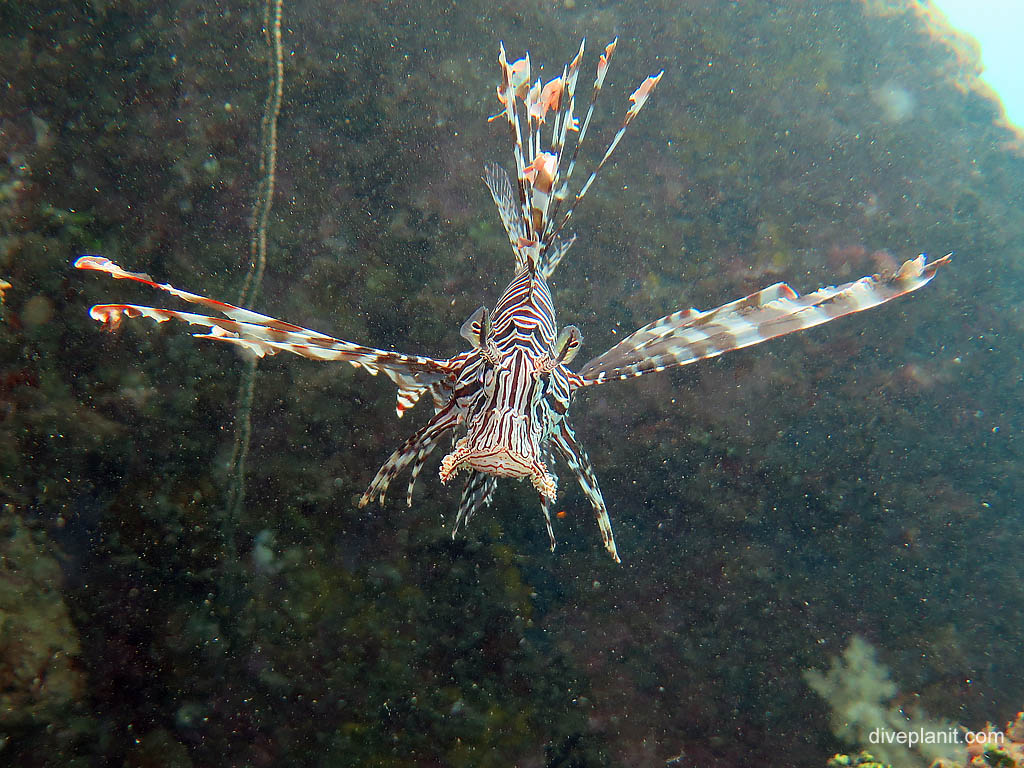Biodiversity #20: You might have a different opinion of Lionfish depending on your geographic location, as they are currently a significant invasive species on the US east coast.
There are ten species globally, with the Common Lionfish (Pterois Volitans), strangely being the most common. All species exhibit aposematism – big word meaning: having antipredator adaptations or “don’t mess with me sonny” (use Scottish accent) attitude, colouration and wide fans projecting spikes, advertising their ability to defend themselves.
The toxin in the spines rarely kills healthy mature humans, but can cause days of significant discomfort.
Lionfish are skilled hunters, preying on small fish, invertebrates and molluscs. They have excellent control of location within the water column, and can blow water jets at their prey to disorientate them before swallowing them whole. If you try to photograph a lionfish, often you’ll find that by the time you’ve set up the shot, you’re looking up its rear-end – now you know why.
Lionfish can live up to 15 years and the females release egg clusters which can contain as many as 15,000 eggs. Combine this with their lack of natural predators and a tolerance for both lower temperatures and salinity and you have the perfect invasive species.
The video shows three variants: The Common Lionfish having an afternoon siesta in a small cave at Christmas Island, the Dwarf Lionfish – with fan-like non-filamentous pectoral fins in North Sulawesi, and the Clearfin Lionfish, which has very fine pectoral fins, on a night dive at Tulamben in Bali.
<= Previous Biodiversity #19 Weedy Seadragon Biodiversity #21 Cuttlefish Next =>




